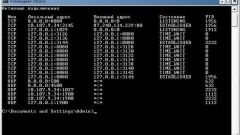Instruction
1
When you search in open sources, the user typically is faced with lists of proxy servers. In each line of the list shows the ip address and the port number is used. A standard entry looks like this: 85.195.96.141:8080, where 85.195.96.141 is the ip address of the server and 8080 is the port that it uses.
2
If you work with Internet Explorer, to configure the connection open the "Internet options" – "Connections" – "settings" and enter the proxy server. If you use Firefox browser you will need the tab "Tools" – "Settings" – "Advanced" – "Network" – "Settings". Those who use Opera browser, open "Tools" – "Settings" – "Advanced" – "Network" – "Proxy servers".
3
What if you became known only to the server ip but not the port that it uses? You should know that the vast majority of proxy servers are using standard ports. The most common three ports: 80, 8080, 3128. If you don't know the port number, try to substitute them one by one in your browser settings. The likelihood that you will find among them is very high.
4
If the server is not working with these ports, try to use these: 8081, 8083, 808, 3129. They are also used quite often, so you have a chance to succeed. There are other common ports, but to touch them does not make sense, as the probability of guessing right is too small.
5
In that case, if you are confident in the health of a server and want to log on to the network through it, try to scan it for open ports. To do this, use the scanner XSpider, you can find it on the Internet. Putting the server address, you will receive a full report on open ports on it. One of them is the one you are looking for.
6
Use to scan ports with Nmap scanner. The program exists in two versions – the console and gui interface. Very big opportunities to gather information about ports (and not only) has the software package Metasploit, you can download versions for both Windows and Linux: http://www.metasploit.com/download/ In the Metasploit there is a console version of the Nmap scanner.
Note
A proxy server can hide information about the source or user request. In this case, the target server sees only the information about the proxy server, e.g. IP address, but is unable to determine the true source of the request. There are also distorting proxy servers, which transmit the target server false information about the true user.
Useful advice
All proxy servers located in the USA and Europe, and access to them can only be obtained via password. All proxy servers have a connection to the Internet at speeds of up to 100Mb/s. you Have the option to request proxy server up to 3 people (shared proxies) or only for yourself (dedicate proxy).





